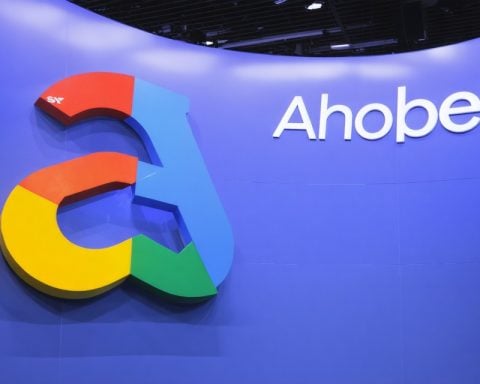Dell Technologies experienced a notable drop in its stock, falling by 12% on Wednesday. This decline was fueled by the company’s cautious outlook on future growth and a warning about the uneven progression in AI development. According to Dell’s Chief Operating Officer, Jeffrey Clarke, while the interest in their AI services has never been greater, the path forward in AI will not be straightforward. This is largely due to the evolving technology and changing needs of customers.
In the recent quarter, Dell reported a 9% dip in revenues from AI servers. Combined with the sluggish recovery in the personal computer market, this led to a downward adjustment in Dell’s revenue forecast for its fiscal year 2025. Analysts point out the company lowered its expected yearly revenue target from $97 billion to $96.1 billion. The company plans to deliver a detailed fiscal 2026 forecast early next year. Despite the current setback, Dell shares remain over 65% higher this year.
The slower embrace of Dell’s PC market recovery was highlighted as a factor, along with growing interest in the newest AI chips, such as Nvidia’s Blackwell series. While Nvidia announced full-scale production recently, delays have occurred, affecting Dell’s server orders. Dell’s servers, which integrate Nvidia’s advanced AI technology, are used by major firms like xAI and CoreWeave.
Analysts remark that the revenue dip in AI servers is linked to delayed shipments rather than lack of demand. Dell’s AI server backlog and pipeline showcase a robust order book, indicating continued strong interest and potential future growth.
The Uneven Path of AI: How Slower Growth at Dell Technologies Impacts Everyone
The Broad Ripples of Dell’s AI and PC Market Struggles
In a period marked by rapid technological evolution, Dell Technologies finds itself grappling with the challenges of accurately forecasting AI growth and dealing with fluctuations in the PC market. While discussing Dell, the ripple effects of its recent 12% stock drop extend far beyond just corporate boardrooms—they impact a multitude of stakeholders from diverse backgrounds.
Impact on Global Workforce and Local Economies
Dell’s cautious outlook signals potential shifts in employment trends, particularly in regions heavily reliant on tech manufacturing and innovation. For instance, areas with substantial Dell facilities might experience pauses in expansion or workforce adjustments, impacting local economies. Meanwhile, communities dependent on technology investments may see slowed economic growth if delays in technology rollouts, like advanced AI servers, keep revenue below projections.
Evolving Consumer Experiences
Globally, consumers may find delayed access to cutting-edge AI-driven innovations. AI’s transformative potential, from personalized customer service experiences to streamlined business processes, hinges on the availability and advancement of AI infrastructures. As companies await Dell’s AI server shipments, industries poised to utilize these technologies must adapt plans, potentially leading to slower tech adoption across sectors.
Advantages and Disadvantages of the Current Situation
The scenario brings both positive and negative aspects to light. On the one hand, Dell’s robust backlog reflects a sustained interest in AI, hinting at a promising growth trajectory once market delays are overcome. This ongoing interest underlines AI’s unwavering appeal and potential for future disruption across various domains.
Conversely, the incremental advances and unpredictability in AI can lead to businesses and developers treading cautiously. The need for constant adaptation into AI methodologies may stretch customers’ budgets and patience, especially as they face shifting targets like delivery timelines and technology updates.
Interesting Controversies and Hidden Gems
A significant point of contention is the competitive landscape emerging with companies like Nvidia holding key positions in the tech supply chain. Delays in Nvidia’s Blackwell chip production have exacerbated Dell’s challenges, underscoring complexities in tech dependencies. This dynamic invites scrutiny over whether such consolidations stifle innovation by creating bottlenecks across parallel tech advancements.
Moreover, the lag in Dell’s expected reversal in PC market trends raises questions about consumer behavior shifts. Has the pandemic permanently altered our reliance on different tech modalities? These are pivotal inquiries as understanding these shifts is crucial for effectively aligning future tech developments.
FAQs
Q: Why is Dell’s PC market recovery important?
A: The personal computer market has traditionally accounted for a substantial portion of Dell’s revenue. A slower recovery suggests prolonged uncertainty in consumer spending habits and priorities, affecting Dell’s overall growth strategy.
Q: How does Dell’s AI strategy align with broader tech trends?
A: Despite setbacks, Dell’s commitment to integrating advanced AI servers aligns with the overall trend of increased AI adoption. The delays reiterated by its stock challenges reflect broader industry hurdles, shaping a complex landscape for technology companies.
For further exploration, access these resources:
– Official Dell Technologies Website
– Nvidia Corporation
Examining the larger narrative, Dell Technologies’ challenges shed light on the intricacies of tech innovation and market integration. As these dynamics continue to evolve, they shape the landscape of employment, consumer tech experiences, and industry competition in tangible, immediate ways.























